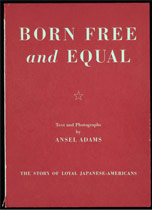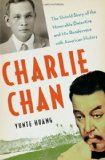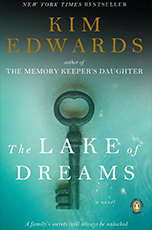Ansel Adams’ Foray into Photojournalism at Manzanar
 Ansel Adams’ little known book Born Free and Equal: The Story of Loyal Japanese-Americans at Manzanar Relocation Center, Inyo County, California, is now the focus of an exhibit at the Bainbridge Island Historical Museum in Washington. A copy of the original book has been printed out for display at the Ansel Adams: A Portrait of Manzanar exhibit. A selection of the Manzanar photographs, some never shown publicly, are also on display through Dec. 7. Adams, who captured iconic black and white images of Yosemite National Park and the American West, took a more photojournalistic approach for the book, interviewing internees as well as documenting moments of their daily lives with pictures. Originally published in 1944, the American public received Born Free and Equal with mixed reactions. According to the Library of Congress website, the book garnered positive reviews and a spot on the Francisco Chronicle‘s bestseller list. In contrast a recent Seattle Times article reports that the book also incited protests, was publicly burned and condemned as “disloyal”. Read more…
Ansel Adams’ little known book Born Free and Equal: The Story of Loyal Japanese-Americans at Manzanar Relocation Center, Inyo County, California, is now the focus of an exhibit at the Bainbridge Island Historical Museum in Washington. A copy of the original book has been printed out for display at the Ansel Adams: A Portrait of Manzanar exhibit. A selection of the Manzanar photographs, some never shown publicly, are also on display through Dec. 7. Adams, who captured iconic black and white images of Yosemite National Park and the American West, took a more photojournalistic approach for the book, interviewing internees as well as documenting moments of their daily lives with pictures. Originally published in 1944, the American public received Born Free and Equal with mixed reactions. According to the Library of Congress website, the book garnered positive reviews and a spot on the Francisco Chronicle‘s bestseller list. In contrast a recent Seattle Times article reports that the book also incited protests, was publicly burned and condemned as “disloyal”. Read more…


